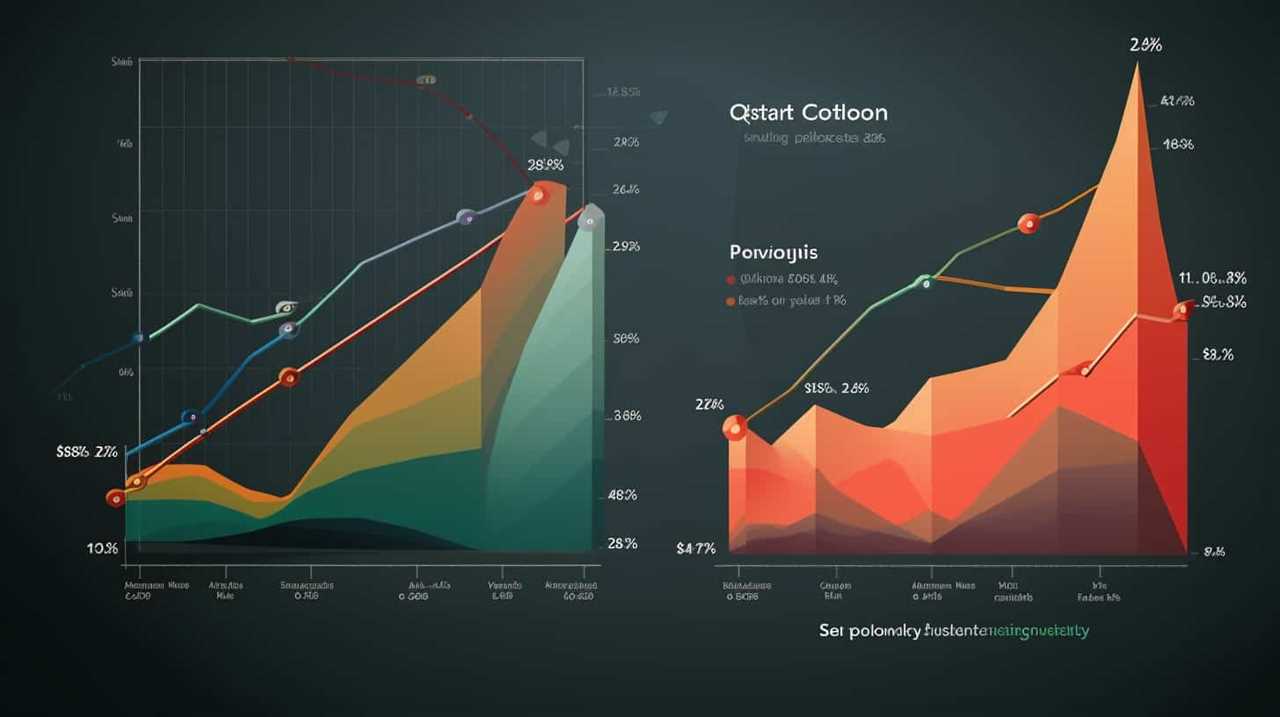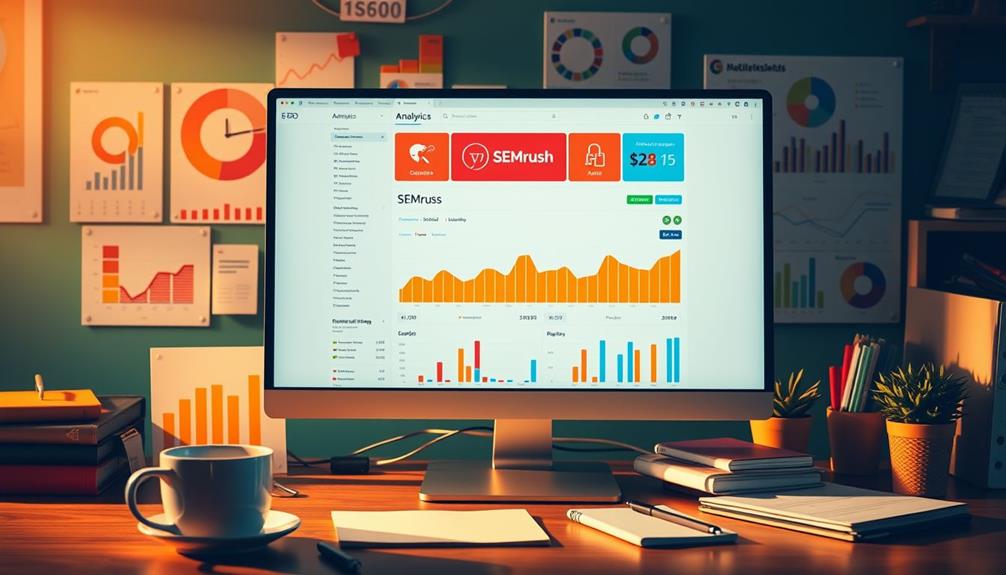Let’s explore the intriguing world of holistic SEO and how it significantly affects website performance and user experience (UX).
By optimizing various factors affecting site speed, implementing efficient techniques, and ensuring mobile responsiveness, we can enhance the user experience and bolster overall performance.
With content optimization and diligent monitoring, we can achieve faster loading times and create a seamless browsing experience.
Join us as we uncover the strategic approach to understanding the interplay between holistic SEO, site speed, and user experience.

Key Takeaways
- Holistic SEO techniques should go beyond traditional strategies and also prioritize site speed and user experience.
- Optimizing site speed is an essential part of a holistic SEO approach.
- Faster loading times can significantly enhance user experience, reduce bounce rates, and improve engagement and conversions.
- Monitoring and analyzing website speed regularly is crucial to identify areas for improvement and make targeted optimization efforts.
Factors Affecting Site Speed
There are several key factors that can significantly impact site speed.
One of these factors is website caching. Website caching involves storing frequently accessed data so that it can be quickly retrieved when needed. By caching static content such as images, CSS, and JavaScript files, the server can deliver them more efficiently, resulting in faster loading times.
Another factor that affects site speed is server response time. This refers to the time it takes for the server to respond to a request from a user’s browser. Slow server response times can delay the loading of a webpage, leading to a poor user experience.
To optimize site speed, it’s important to implement effective website caching strategies and ensure that server response times are minimized.

Now, let’s explore some optimization techniques for faster loading.
Optimization Techniques for Faster Loading
To optimize site speed and improve user experience, we can implement a range of optimization techniques for faster loading. Here are four techniques that can be utilized:
- Lazy Loading: This technique delays the loading of non-critical resources, such as images or videos, until they’re needed. By loading these resources only when necessary, we can significantly reduce the initial load time of a webpage.
- Image Compression: Large image files can slow down a website’s loading speed. By compressing images without sacrificing quality, we can reduce their file size and improve loading times. Techniques like lossless compression or using modern image formats like WebP can be employed.
- Minification: This technique involves removing unnecessary characters, such as white spaces and comments, from code files. Minifying HTML, CSS, and JavaScript files reduces their size, resulting in faster loading times.
- Caching: Caching involves storing static resources, such as images or CSS files, on the user’s device. This allows subsequent visits to the website to load these resources from the cache, rather than downloading them again, leading to faster loading speeds.
Mobile Responsiveness and User Experience
Mobile responsiveness plays a crucial role in enhancing user experience and site speed. With the increasing use of mobile devices to access the internet, it’s essential for websites to meet accessibility standards for mobile devices and provide a seamless user experience across different screen sizes.
Responsive design, which adapts the layout and content of a website based on the device it’s viewed on, is of utmost importance in improving user engagement. By implementing responsive design, websites can ensure that users can easily navigate and interact with the site, regardless of the device they’re using. This ultimately leads to higher user satisfaction, increased time spent on the site, and lower bounce rates.

Moreover, mobile responsiveness also contributes to site speed, as optimized designs and layouts reduce load times. In the next section, we’ll explore how content optimization further improves site performance.
Content Optimization for Better Performance
As we delve into the topic of content optimization for better performance, we can see how implementing effective strategies directly impacts site speed and UX. To achieve optimal performance, here are four key strategies to consider:
- Image compression: By compressing images without sacrificing quality, you can significantly improve loading speed. This can be done through various tools and techniques, such as reducing image file sizes and utilizing modern image formats like WebP.
- Minifying CSS and JavaScript files: Minification involves removing unnecessary characters and whitespace from CSS and JavaScript files, resulting in faster performance. This process reduces the file size and allows browsers to load the files more quickly.
- Caching mechanisms: Implementing caching mechanisms allows browsers to store certain files locally, reducing the need for repeated downloads. This can be done through browser caching, server-side caching, or utilizing content delivery networks (CDNs).
- Content delivery optimization: Optimizing the delivery of content involves strategies such as lazy loading, which defers the loading of non-critical assets until they’re needed, reducing the initial load time.
Monitoring and Analyzing Website Speed
One crucial step in optimizing site speed and enhancing user experience is regularly monitoring and analyzing website speed. This allows us to identify any potential issues or bottlenecks that may be affecting the performance of the site.
One important factor to consider in this process is the importance of server location. The physical distance between the server and the user can have a significant impact on the website’s speed. By choosing a server location that’s closer to the target audience, we can reduce the latency and improve the overall loading time of the site.

Another key aspect to consider is the role of caching in website speed optimization. Caching involves storing frequently accessed data in temporary storage to reduce the need for repeated requests to the server. By implementing effective caching strategies, we can greatly improve the speed and performance of the website.
Frequently Asked Questions
How Does Server Location Affect Site Speed?
Server location can have a significant impact on site speed due to latency. Factors affecting server response time include distance between user and server, network congestion, and server infrastructure.
Are There Any Specific Coding Practices That Can Help Improve Site Speed?
There are several code optimization techniques and caching strategies that can significantly improve site speed. By implementing these practices, we can enhance the performance and overall user experience of our website.
What Are the Most Common Mistakes That Impact Mobile Responsiveness?
When it comes to mobile design and creating a responsive layout, there are common mistakes that can greatly impact mobile responsiveness. Let’s dive into the most prevalent errors and how to avoid them.

Does Content Length Have an Impact on Website Speed?
Yes, content length can impact website speed. It is important to optimize content by using concise and strategic language. Additionally, image compression techniques should be implemented to improve site speed and user experience.
How Can Website Speed Be Measured and Analyzed Effectively?
Website performance metrics are crucial for analyzing site speed. We use tools like PageSpeed Insights and GTmetrix to measure and analyze effectively. It’s essential to understand the impact of website speed on user experience and SEO.
How Does Holistic SEO Improve Site Speed and User Experience?
Holistic SEO refers to optimizing a website considering various factors. The impact of holistic seo on site speed is significant. By optimizing code, compressing images, and removing unnecessary elements, holistic SEO techniques improve site speed. This results in enhanced user experience as fast-loading websites are more likely to attract and retain visitors, decreasing bounce rates and boosting engagement.
Conclusion
So, after all this talk about site speed and user experience, one might think that a slow website is the way to go. But trust us, it’s not.
By optimizing your site speed and improving user experience, you can attract more visitors, keep them engaged, and ultimately drive better results for your business.

So don’t let your website become a slow and frustrating experience for users. Take the necessary steps to ensure your website is fast, responsive, and user-friendly.










